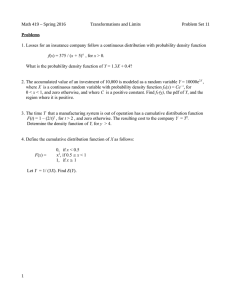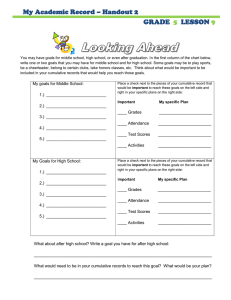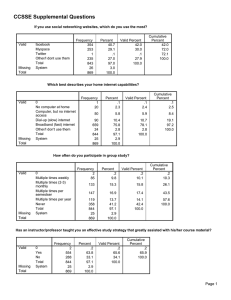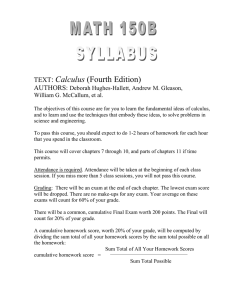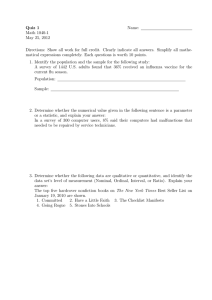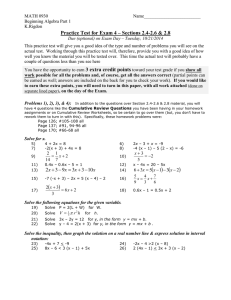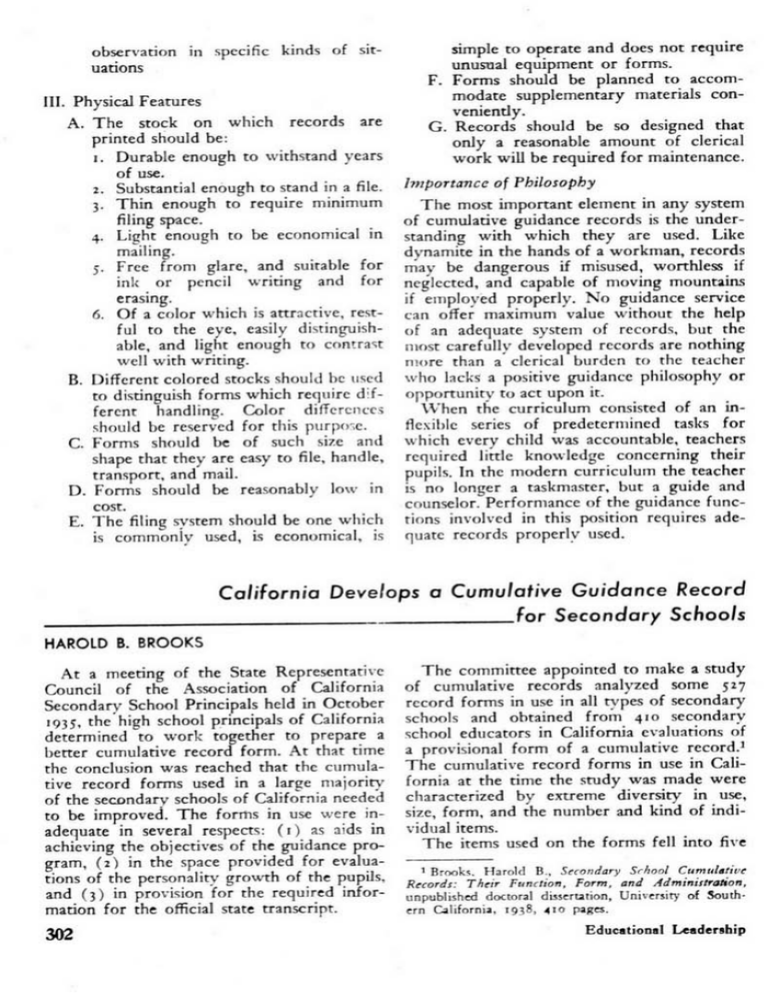
observation in specific kinds of sit-
uations
111. Physical Features
A. The stock on which records are
printed should be:
i. Durable enough to withstand years
of use.
2. Substantial enough to stand in a file.
3. Thin enough to require minimum
filing space.
4. Light enough to be economical in
mailing.
5. Free from glare, and suitable for
ink or pencil writing and for
simple to operate and does not require
unusual equipment or forms.
F. Forms should be planned to accommodate supplementary materials conveniently.
G. Records should be so designed that
only a reasonable amount of clerical
work will be required for maintenance.
Importance of Philosophy
The most important element in any system
of cumulative guidance records is the understanding with which they are used. Like
dynamite in the hands of a workman, records
may be dangerous if misused, worthless if
neglected, and capable of moving mountains
erasing.
if employed properly. No guidance service
6. Of a color which is attractive, rest- can offer maximum value without the help
ful to the eye, easily distinguish- of an adequate system of records, but the
able, and light enough to contrast most carefully developed records are nothing
well with writing.
more than a clerical burden to the teacher
B. Different colored stocks should be used who lacks a positive guidance philosophy or
to distinguish forms which require dif- opportunity to act upon it.
When the curriculum consisted of an inferent handling. Color differences
flexible series of predetermined tasks for
should be reserved for this purpose.
C. Forms should be of such size and which every child was accountable, teachers
shape that they are easy to file, handle, required little knowledge concerning their
pupils. In the modern curriculum the teacher
transport, and mail.
D. Forms should be reasonably low in is no longer a taskmaster, but a guide and
counselor. Performance of the guidance funccost.
E. The filing system should be one which tions involved in this position requires adeis commonly used, is economical, is quate records properly used.
California Develops a Cumulative Guidance Record
for Secondary Schools
HAROLD B. BROOKS
At a meeting of the State Representative
Council of the Association of California
Secondary School Principals held in October
1935, the high school principals of California
determined to work together to prepare a
better cumulative record form. At that time
the conclusion was reached that the cumulative record forms used in a large majority
of the secondary schools of California needed
to be improved. The formrs in use were inadequate in several respects: (X) as aids in
achieving the objectives of the guidance program, (2) in the space provided for evaluations of the personality growth of the pupils,
and (3) in provision for the required information for the official state transcript.
The committee appointed to make a study
of cumulative records analyzed some 527
record forms in use in all types of secondary
schools and obtained from 410 secondary
school educators in California evaluations of
a provisional form of a cumulative record.'
The cumulative record forms in use in California at the time the study was made were
characterized by extreme diversity in use,
size, form, and the number and kind of individual items.
The items used on the forms fell into five
I Brooks. Harold B., Secondary School Cumulative
Records: Their Function, Form, and Administrion,
unpublished doctoral dissertation, University of Southern California, 1938, 410 pages.
Educational Leadership
classifications in information, namely, personal, marks and credits, home and relatives, attendance, and entrance-graduationwithdrawal. There was, apart from "pupil's
name," no consistent agreement on any other
item. Seventy different sizes of forms were in
use, and the median size was 6 by 8 inches.
The California State Board of Education
requires transcripts of high school and junior
college records. Examination of the forms
then in use showed: (i) only six of the
twenty-four items required for state transcripts of high school records were found on
75 per cent or more of the cards; (2) only
nine of the forty-three items required for
state transcripts of junior college records
were found on 75 per cent or more of the
cards.
The California Cumulative Guidance Record for Junior and Senior High Schools has
been revised four times since it was first developed in 1937 to the end that it might have
simplicity, completeness, and be entirely
practical. The latest revision has been in use
since 1940. Samples were distributed widely
and several city and countv school systems
are now using the Record or slight modifications of it. In addition, more than 5o,ooo
copies are in use in various parts of the state
in smaller districts. Use of the Record has
increased each year. Distributed through the
Association of California Secondary School
Principals, it is the record most widely used
throughout the state.
Informnation Desired by California Edurcators
The Record contains all the twenty-four
items of information needed for the preparation of the official state transcript. These
are designated with an asterisk. Incidentallv
these items form a minimum cumulative
record for schools having limited facilities
for recording extensive data. At the same
time, of course, the form provides the opportunity for recording many additional items
of information in schools where this is desired.
In all, fifty-two items are included in the
Record, and they are numbered consecutively
for convenience of description in the accompanying manual. The Record includes
such basic information as the following:
In their appraisal of the provisional form,
California educators expressed a desire for a
cumulative record card which included:
(i) items which had been carefully selected
for guidance and administrative purposes and
(z) items needed for official transcripts and
reports. The inaccuracy and inadequacy of
present methods and terminology of evaluating behavior characteristics caused them to
question the advisability of including such
items even though they are important.
The educators, therefore, favored space for
comments rather than extensive lists of items
and subjects to check, and they emphasized
the need for accurate and complete test data.
There was a tendency, also, to favor a separate record for junior colleges. Further
agreement was shown toward a simple, accurate, complete record, organized to provide for continuity and ease of interpretation.
Preference was expressed for the folder card,
91/2 by i i % inches, rather than for the smaller
one then in common use.
For general use in California. it was agreed
that the junior and senior high school cumulative record should be kept on the same
foram. The record of health, the educators
believed, should be stated on the form in
general terms, and an auxiliary record relating to specific health and physical education
should be developed and maintained wherever
possible. Furthermore, they agreed that some
provision should be made for variations between schools with respect to course names
and graduation requirements.
April 1945
Description of the Record
i .
2.
3.
4.
56.
7.
8.
9.
10.
i1.
IZ.
3.
1'4
Personal data and photograph
Scholastic record--grades 7-12
Graduation-date, rank in class, requirements
Family data and home background
Educational and vocational plans
Health record
Achievement, personality, and aptitude
test data
Attendance record
Work experiences
Summaries of student's growth and status
Significant achievements
Type and amount of reading
Summary of significant interviews
Follow-up and school's recommendations.
The form is printed on a folder card 9'/2
by 11/4 inches. The folders can be filed in a
303
standard vertical letter-size file. This is the
recommended method of filing because the
home-room teachers, counselors, and clerks
may use the records more conveniently if
they are filed vertically. The need for expensive patented visible files is also eliminated. The size of the card also makes possible ample space for recording the data.
One of the most outstanding features of the
California Record is the inclusion of space
for the recording of pupil growth and development in personality characteristics as
well as in subject achievement. Space is in.cluded for evaluations of four characteristics:
responsibility, inquiring mind, social concern,
and work habits. There is evidence that ratings in these characteristics can be effectively
made by classroom and guidance teachers.
It has been demonstrated that it is possible
to use effectively a cumulative record folder
card similar to the one described here even
in the smallest school system. Procedures
have- been worked out to eliminate any unnecessary clerical work. A review of the
amount of time now used in school systems in
the preparation and transcription of records
reveals that the plan which is suggested, with
some modification, can be adopted without
much, if any, increase in the expenditure of
energy or time even in the smallest schools.
Scores of schools are photostating the form
efficiently at a minimum cost. In this way the
original form containing the complete record
made in junior high school can be forwarded
to the senior high school. Much tedious copying of records may thus be eliminated and
more adequate information be made available
for the senior high school.
In developing any cumulative record system, the first consideration is the belief on
the part of the superintendent, the supervisor, the principal, the counselor, and the
teacher that a good cumulative record can
be a most effective aid in guiding boys and
girls. If this is believed strongly enough by
all concerned, the problems of the function,
form, and administration of the cumulative
record can be solved.
Using Cumulative Records
CLARENCE FIELSTRA
AS A REQUISITE to masterful performance, artists and artisans alike must have a
thorough knowledge and understanding of
the materials with which they work. To educators, who work with human materials, that
kind of knowledge and understanding is imperative. Accordingly, increased emphasis is
being placed by administrators and teachers
on obtaining more information about the
children who are entrusted to their guidance
and educational direction. Improved means
of facilitating the keeping of adequate pupil
records are likewise gradually being developed.
Cumulative records have no value unless they
are used by teachers and counselors in provid.
i#g educational, vocational, and personal guidance functions for their students. Clarence
Fielstra, director of curriculum, San Diego
County, California, points out the need for a
cumulative guidance record and howa it func.
tions in a school's guidance program.
Who Should Use Cumulative Records?
Progress in the matters of obtaining and
recording pertinent data concerning pupil
personnel has been accompanied by the raising of certain problems relative to the use of
such records. One of these problems is that
of determining who in our schools should be
given access to whatever guidance files are
kept. To this question the educational profession has not formulated a reply which reflects
unanimous opinion. A point of view which
has gained wide acceptance, however, is that
every teacher should know as much as possible about each of his pupils. It is believed
that guidance should be the primary function
of the classroom teacher and that he as well
as the specialist in guidance should have access to all significant records.
In opposition to this point of view is the
opinion that only good teachers who are truly
professional can use pupil records intelligently. With this statement there can be little
disagreement. It should be pointed out, neverEducational Lendership
Copyright © 1945 by the Association for Supervision and Curriculum
Development. All rights reserved.

